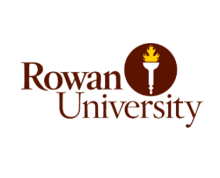
Rowan University
Machine Learning for Sustainable Chemicals and Processes
Abstract
Sustainability in chemical processes is paramount to increasing sustainability across society. It is therefore important to include sustainability assessments throughout the design process, especially in the early stages. This is difficult, though, due to the lack of specificity and information at that point, which makes the evaluation of different sustainability metrics difficult. Improvements to sustainability become more difficult as the design progresses, however, as earlier decisions limit future research and considerations (Argoti et al.). Better analysis in these early stages is therefore necessary to overall sustainability with a consideration for a multitude of factors that impact the processes’ and their chemicals’ environmental effects (Finnveden et al.). Machine Learning (ML) may be a critical tool in early stage process design, as it has been shown to accurately predict the effects of novel chemicals despite little available information (Karka et al.).
This work aims to develop a ML algorithm that accurately forecasts the effects of chemicals in the environment, especially in relation to human health, ecosystem quality, climate change, and resource utilization. It also introduces an innovative approach to cradle-to-cradle life cycle assessments wherein the solvent is reclaimed for future use in the disposal phase. The study employed artificial neural networks (ANN), which were used with 500 datapoints, split between a training, testing, and validation set. Data was sourced from EcoInvent, a chemical information database, and the feature set included over 200 molecular descriptors and 23 thermodynamic properties for each element. A stepwise feature selection process was used to reduce the number of features from 223 to 10. Following hyperparameter tuning, the model’s performance was assessed on the test set using the R-squared and Root-Mean-Squared-Error (RMSE). To illustrate the model’s application, a case study was carried out on a cradle-to-cradle LCA of acetone. The gate-to-gate phase is modeled through the valorization of red wine pomace through solvent extraction, considering emissions during the use phase, including energy-related emissions and fugitive emissions from separation processes. Finally, the end-of-life phase involved the recovery of the solvent through distillation for reuse. Any requests for access to the code files and documentation can be directed to the authors.